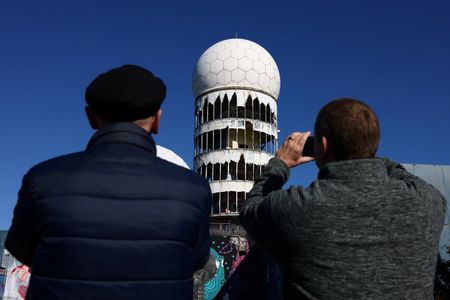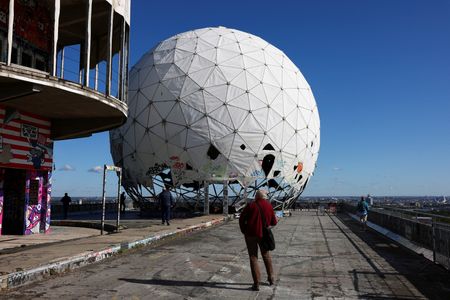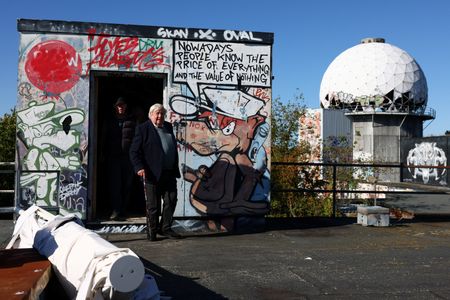BERLIN (Reuters) -There is little to indicate that the Teufelsberg, or Devil's Mountain, a thickly forested clump rising above western Berlin, is a pile of wartime rubble built on the entombed remains of a Nazi military college.
The mound, just 80 metres high, soars over Germany's flat capital, offering views far around, such as of the television tower to the east, which during the Cold War was the symbol of occupied and divided Berlin's eastern half.
It was the Teufelsberg's commanding height, that commended it to U.S. spies when they were looking for a place from which to spy on their Communist rivals in Soviet-controlled East Germany and beyond.
Over the decades, with their British and French allies who occupied West Berlin, they threw up antennas and radars to spy on signals from East German and Soviet forces.
"Our main mission was to provide early warning of an impending attack on Western Europe," said William McGowan, part of a delegation of American and British former soldiers visiting the long derelict site this week.
"Our soldiers and airmen were very busy monitoring the communications of the Group Soviet Forces Germany and the East German army."
The site has been unused since the early 1990s, and is now run by a collective of artists who run it as a gallery of street art. Halls that once housed radio equipment are now covered with spray-painted pictures of manga characters and subversive political messages.
"It all started with the fact that after the war, the rubble needed to go somewhere," said historian Andreas Juettemann. Surrounded on all sides by East Germany, West Berlin had nowhere else to dump the remains of buildings destroyed in allied bombings.
"This spot in the Grunewald forest near the city was chosen to pile it up."
Deep beneath the rubble lie the remains of a military college designed by Nazi architect Albert Speer. Its half-complete walls were found to be too robust for demolition by the British authorities who controlled that part of Berlin.
The soldiers serving on and around the hill saw the city in one of its darkest eras.
"Such a lot that we were denied because of the state of the wall and the East and the West," said former Royal Air Force airman Ian Wilson. "We drove over this morning and it was gorgeous to see all the buildings in their brilliance. It was really, really good.”
(Reporting by Christian Mang and Lutz Faupel, writing by Thomas Escritt, editing by Alexandra Hudson)











